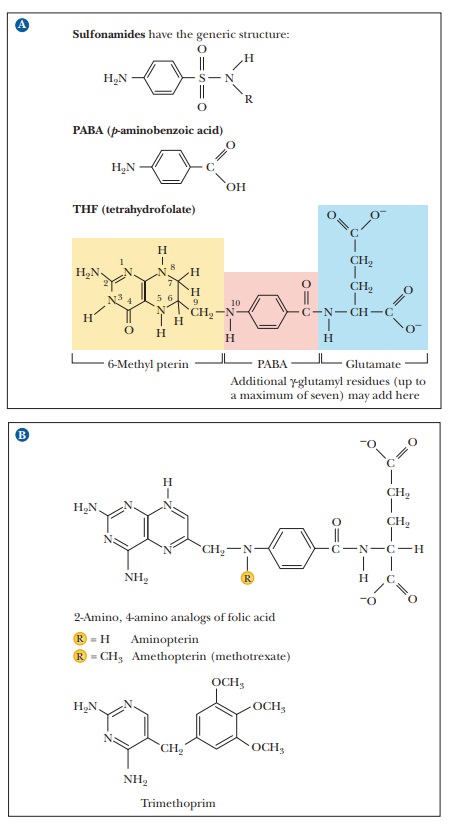Chapter: Biochemistry: The Metabolism of Nitrogen
Chemotherapy and Antibiotics - Taking Advantage of the Need for Folic Acid
Chemotherapy
and Antibiotics—Taking Advantage of the Need for Folic Acid
We have already seen the importance of folic acid and its derivative, tetrahydrofolate, in several reactions. This importance has been exploited in human medicine. Bacteria synthesize folic acid from p-aminobutyric acid (PABA). A type of antibiotic called a sulfonamide (Figure a) works by competing with PABA in the synthesis of folic acid.
Because folic acid is critical to the formation of purines, antagonists of folic acid metabolism are used to inhibit nucleic
acid synthesis and cell growth. Rapidly dividing cells, such as those found in
cancer and tumors, are more susceptible to these antagonists. Several related
compounds, such as methotrexate (Figure b), are used in chemotherapy to inhibit
cancer cell growth.

(a) Sulfa drugs (sulfonamides) act as antibiotics because of their similarity to p-aminobenzoic acid (PABA), a precursor of folic acid synthesis. Sulfa drugs compete with PABA and stop folic acid synthesis in bacteria. (b) Three compounds that are used for chemotherapy because they interfere with folic acid metabolism. They are almost irreversible inhibitors of dihydrofolate reductase, having a 1000-fold greater affinity than dihydrofolate.
Related Topics